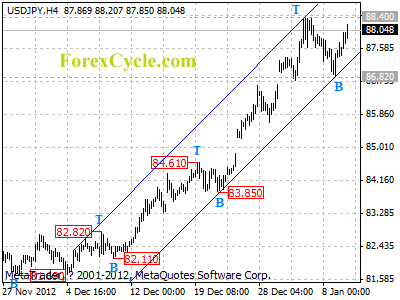By MoneyMorning.com.au

Here’s a report from the Australian that won’t surprise you one jot:
‘The three best-performing major super funds in Australia are all corporate funds run for in-house employees. Not only that, but two of the three are funds run for the benefit of bank staff, in this case Goldman Sachs and Commonwealth Bank.’
It’s a well-known fact that if you want to be rich and gain influence, the best way to do it is to work for Goldman Sachs (or as it’s also known, Government Sachs).
But if you can’t get a job at Goldman’s you’ll need to find other ways to get rich (forget about gaining influence, it’s overrated).
So today we’ll look at what is still the best way to build wealth in Australia…
As we wrote recently, 2012 turned out to be a great year for Australian stocks. The blue-chip S&P/ASX 200 index gained 14%. The gain was even bigger if measured from the June low.
Still, over the past year, the Australian stock index has been one of the best performers among Western stock indices. The following chart shows the comparison between the Australian stock market (blue line), the US S&P 500 (yellow line), the UK FTSE 100 (red line), and Japan’s Nikkei 225 index (green line):
Source: Google Finance
The above stock chart tells you two things. First, it tells you that when stocks move up, they can move up pretty quickly. Two-thirds of the Australian stock’s 2012 gain came in the last six weeks of the year.
But look at the left hand side of the chart. That’s where you’ll get the second message. By March, the Nikkei 225 had gained 22%, and by May the Aussie index had gained 7%. Yet it wasn’t long before both indexes had given up all those gains before rallying again.
So while the stock market looks great right now, there’s always the risk that it could do an about turn and hit the skids.
Even so, we still like the look of stocks, despite the recent rally. Here’s why…
Lower Interest Rates to Send Stocks Higher
There’s no doubt in our mind that market insiders are doing their best to create and maintain another asset bubble. That has been obvious for some time – bond prices are near record highs (due to low bond yields), commodity prices are on the rebound, and even some property markets are starting to recover.
We’ve heard reports that after crashing in 2011, Perth house prices have taken off like a rocket again.
On top of that, stock markets the world over are on the march higher. The US stock market is within a sniff of its record high, and the Australian stock market is now at the highest point since early 2011. Of course, for the Aussie market there’s still some way to go before it reaches the 2007 high.
But if the trend from overseas happens here, as the Reserve Bank of America (RBA) cuts interest rates further, it will force investors to take even bigger risks. And that means more demand for dividend paying stocks, and more demand for risky assets.
Today the RBA has the benchmark interest rate at 3%. But according to a survey of bank economists by the Australian Financial Review (AFR), most have the RBA cutting the cash rate further within the first six months of this year.
The median forecast is for a cash rate of 2.75% by June. One bank, Australian & New Zealand Banking Group [ASX: ANZ] reckons the cash rate will fall to 2% by the end of the year.
If you think that sounds crazy, just consider this, the average difference (spread) between the US Federal Funds Rate and the RBA Cash Rate is about two percentage points. As the chart below shows:
Source: Fuller Money
The above chart only goes to 2011. Right now the spread is 2.75 percentage points…and fast approaching the two percentage point average.
A Bumper Two Years for the Australian Share Market?
Of course, as the chart also shows, rarely does it sit at the average. Most of the time, it straddles either side (hence why it’s an average). So odds are as the Aussie dollar stays high, and the domestic economic outlook worsens, this will force the RBA to cut rates even further.
Right now, we couldn’t completely ignore the possibility of the RBA cutting rates below 2% in 2014…perhaps even below 1.5%.
That will make dividend paying stocks even more attractive, and despite the poor economy, will likely push share prices higher.
And don’t forget, the Aussie government has just abandoned its promise to return to a surplus. With Aussie government debt ($261.8 billion) much lower than other Western economies, more spending is on the cards.
In short, while investing in stocks is always risky, if Australia follows the pattern of other economies and other markets, 2013 and 2014 could shape up to be a bumper two-year stretch for the Aussie market.
Cheers,
Kris
From the Port Phillip Publishing Library
Special Report:
The Big Money Secret of Ironstone Mountain
Daily Reckoning:
A North Korean Investment Opportunity
Money Morning:
How Central Banks Are Letting Inflation Get Out of Control
Pursuit of Happiness:
Are You Brave Enough to Break From Technology?
Australian Small-Cap Investigator:
Five Simple Steps to Picking Winning Small-Cap Stocks









